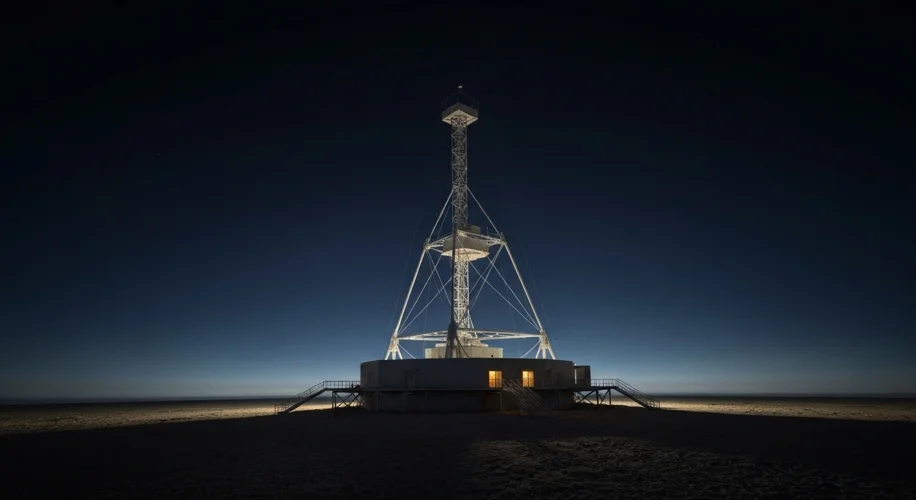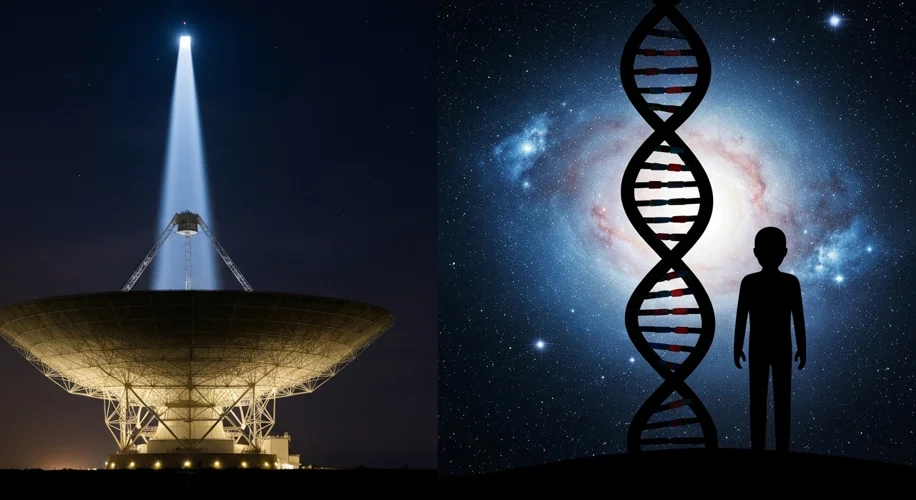The year is 1974. The air at the Arecibo Observatory in Puerto Rico crackles not just with the hum of advanced machinery, but with a potent mix of scientific ambition and profound existential curiosity. For years, humanity had strained its ears towards the cosmos, listening for a whisper, a signal, anything to suggest we were not adrift in a silent universe. Now, for the first time, we were to shout.
This was the era of the Cold War, a time of heightened global tension and technological races. Yet, amidst the anxieties, a different kind of race was subtly underway – the search for extraterrestrial intelligence, or SETI. Spearheaded by visionary scientists like Frank Drake and Carl Sagan, SETI was a quiet counterpoint to the noisy geopolitical struggles, a hopeful endeavor focused on the possibility of life beyond Earth.
On November 16, 1974, a team led by Dr. Frank Drake and Dr. Carl Sagan prepared to send a message not just across the vastness of space, but across an almost unimaginable gulf of time. The chosen vehicle was the powerful Arecibo radio telescope, a colossal dish nestled in the Puerto Rican landscape, capable of transmitting a focused beam of radio waves toward a distant star system. The target: the globular cluster M13, approximately 25,000 light-years away, containing hundreds of thousands of stars. The message itself, a binary code that would take nearly three minutes to transmit, was a meticulously crafted digital postcard.

What did this cosmic dispatch say? It was a bold attempt at a universal language, designed to be decipherable by any intelligent civilization capable of recognizing patterns. The message consisted of 1,679 binary digits, a prime number (73 x 23), chosen for its mathematical significance. If decoded, it would reveal fundamental information about humanity and Earth: our basic chemistry, our DNA structure, our human form, the solar system, and the Arecibo telescope itself. It was a snapshot of our existence, a greeting from a small blue planet.
The idea of sending messages to potential alien civilizations wasn’t entirely new. The Pioneer plaques and the Voyager Golden Records had already sent physical artifacts carrying similar information into interstellar space. However, the Arecibo message was different; it was an active, directed transmission, a deliberate shout into the cosmic void. It was a gamble of immense proportions, costing roughly $1 million (a significant sum for the time) for a single, powerful broadcast. The hope was that it would be received by intelligent beings who could understand its encoded contents. But the risk, albeit intangible, was also present: what if we announced our presence to a civilization less benevolent than ourselves? This inherent duality of hope and fear, of profound curiosity tempered by caution, fueled much of the debate surrounding the project.
The Arecibo message was more than just a scientific experiment; it was a philosophical statement. It represented humanity’s collective yearning to understand its place in the universe and its desire to connect with something larger than itself. While M13 would not receive the message for 25,000 years, and any potential reply would take another 25,000 years to reach Earth, the act of sending it was immediate and powerful. It marked a pivotal moment in our species’ history – the moment we consciously decided to announce our existence to the cosmos.
The debate ignited by the Arecibo message, and by SETI efforts in general, continues to this day. Some see it as a noble and necessary quest, a testament to human ingenuity and our innate desire to explore. Others express concerns about the potential risks of revealing our location to unknown extraterrestrial entities. The question of whether we are alone in the universe remains one of humanity’s most enduring mysteries, and attempts like the Arecibo message are bold steps in the ongoing search for answers, forever echoing in the vast silence of space.
While the specific message sent in 1974 was a landmark event, the broader concept of interstellar communication and the implications of contacting alien intelligence remain subjects of intense scientific and public fascination. Today, in 2025, as we continue to scan the skies and develop more sophisticated methods of listening, the echo of that $1 billion gamble—or rather, the $1 million broadcast that symbolized a much larger investment in hope—resonates perhaps louder than ever. It serves as a poignant reminder of our cosmic journey and the profound questions we continue to ask ourselves: Are we alone? And if not, what will happen when we finally get an answer?

